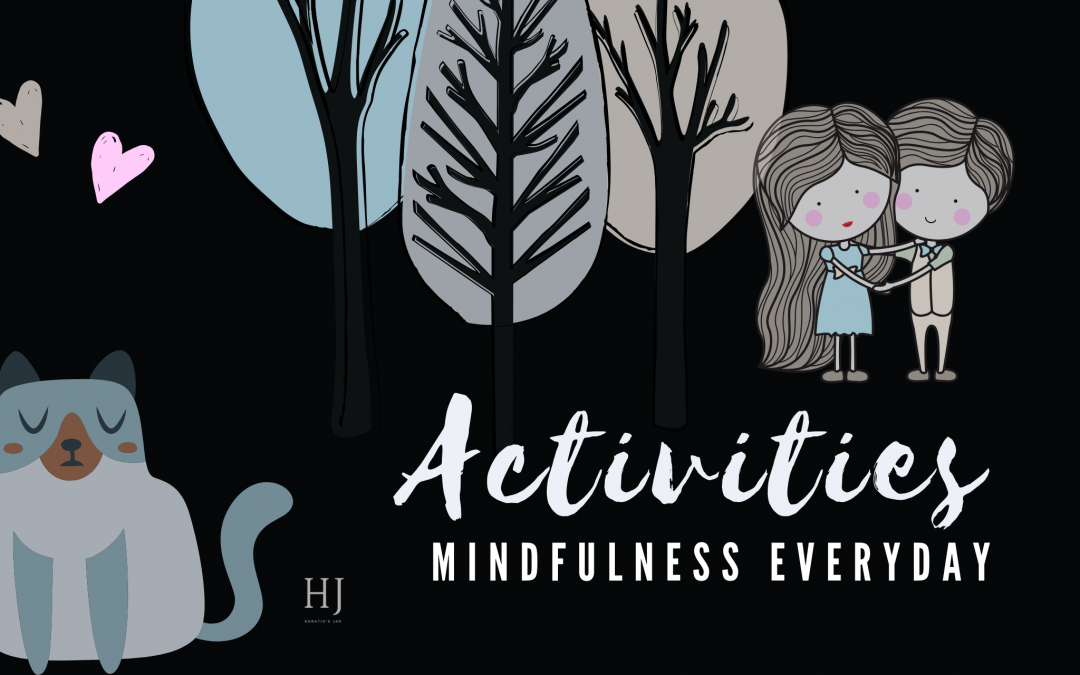Mindfulness Everyday – Activities
In our busy lives we often neglect the simple things that keep our reality harmonious, ground us in nature and cultivate wellbeing. Places that provide sanctuary and stillness have been overcome by our integrated obsession with technology.
Instead of finding time to tune into the natural world, we tune out into a virtual one. Inside of our virtual playground our minds are filled to the brim with concepts and images of alternate realities that often appear to be better than our own. The images we see are often hugely exaggerated versions of the truth – whether it be the perfect house, the perfect love affair or a life of endless travel.
In the struggle to make the unreal into real, we fall short and the enormous expectations we place on ourselves crumble our self- esteem (that is built on the externalised world). We are left feeling lost and disconnected from who we are the truth of the world we live in.
Simple is best.
Simple things really are the best.
There are a plethora of ways to nurture wellbeing: self healing, emotional growth and happiness. Popular tools for mindfulness and wellbeing are of course the regular practice of yoga and meditation, but there are other ways to treat yourself with greater kindness, grow your self – awareness and help you cope with the stress of everyday living.
In the chart below there are simple and effective activities and tools you can use when things seem to fall out of balance for you. These activities are for everyone including kids. They provide ways to reach a deeper awareness of yourself and your place on planet earth and help you learn who you are from the inside out. Simple mindfulness activities cultivate connections to the natural world and the people in it.
In short – we are a social, spiritual and sensitive species that which requires a place in community, emotional care, regular nourishment from the earth a connection to Mother -Nature, close friends and comfort from loved ones. Maintaining these elements of wellbeing are the easiest ways to balance your internal and external worlds and feel peace and contentment in everyday living.
Namaste xx

Guest Contributor: Emily Rack
Business Name: Horatio’s Jar
Publisher: Digital Schools
Emily Rack is a yoga teacher, meditation instructor, freelance writer and visual content creator. She incorporates a unique creative flair into her yoga and meditation classes, courses and workshops. Emily hosts events and classes in schools and the wider community & is passionate about teaching the art of mindfulness.
Simple is best.
Simple things really are the best.
There are a plethora of ways to nurture wellbeing, self healing, emotional growth and happiness. Popular tools for mindfulness and wellbeing are of course the regular practice of yoga and meditation, but there are other ways to treat yourself with greater kindness, grow your self awareness and help you cope with the stress of everyday living.
In the chart below there are simple and effective activities and tools you can use when things seem to fall out of balance for you. These activities are for everyone including kids. They provide ways to find reach a deeper awareness of your place on planet earth, learn who you are from the inside out and cultivate connections and relationships that provide support and meaning.
In short – we are a social, spiritual and sensitive species which requires a place in community, care and nourishment from the earth and Mother -Nature, close friends and comfort from loved ones and a healthy, happy environment to live and thrive in.
——-
PUBLISHER’S DISCLAIMER: The publisher of this blog post (Digital Schools PTY LTD) works in partnership with the school as a 3rd party provider to help build and maintain the school website. Digital Schools sources a range of experts who provide products and/or services to educational institutions and we work with them to produce and publish topical information in the form of blog posts that we think may be relevant, interesting or topical to families within the community. The views, opinions and content listed in this blog post are that of the guest contributor and/or publisher (Digital Schools). It should be noted that whilst the publisher and guest contributors are acting with the best intentions and in the best interests of the school and their community to provide helpful or interesting information, sometimes the content may not necessarily reflect the views of the school.
The information in this blog post is not meant to be used, nor should it be used, to diagnose or treat any medical condition. For diagnosis or treatment of any medical problem, consult your own physician. The school and the publisher of this blog post are not responsible for any person reading or following the information in this article who may experience adverse effects.
Any references to external websites or sources are provided for informational purposes only and do not constitute endorsement by the school or publisher in any way and the publisher and/or school cannot guarantee accuracy of information listed.
If you have feedback on any content on this platform, you can submit it to the publisher using the feedback link provided at the bottom of this page.



